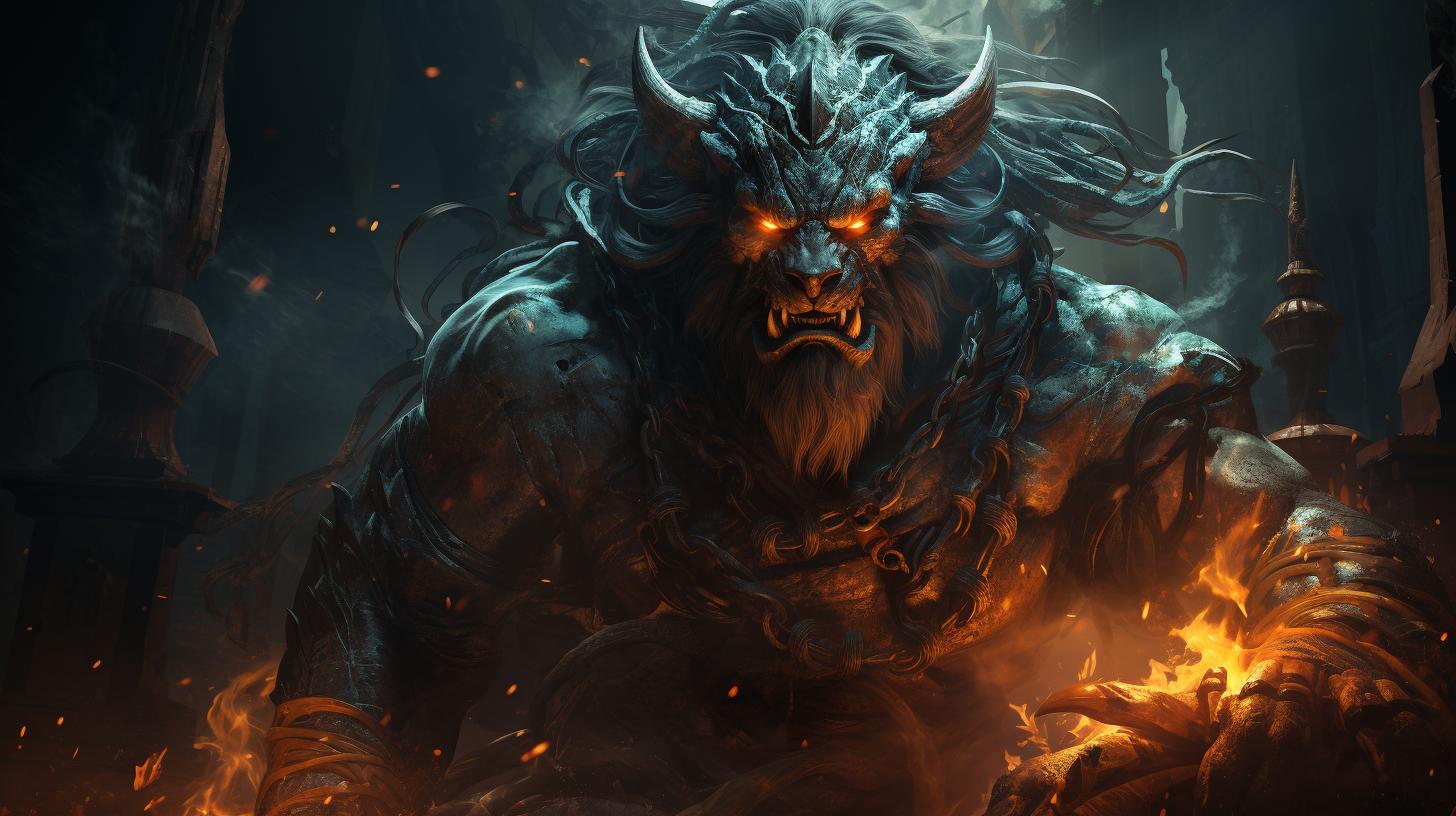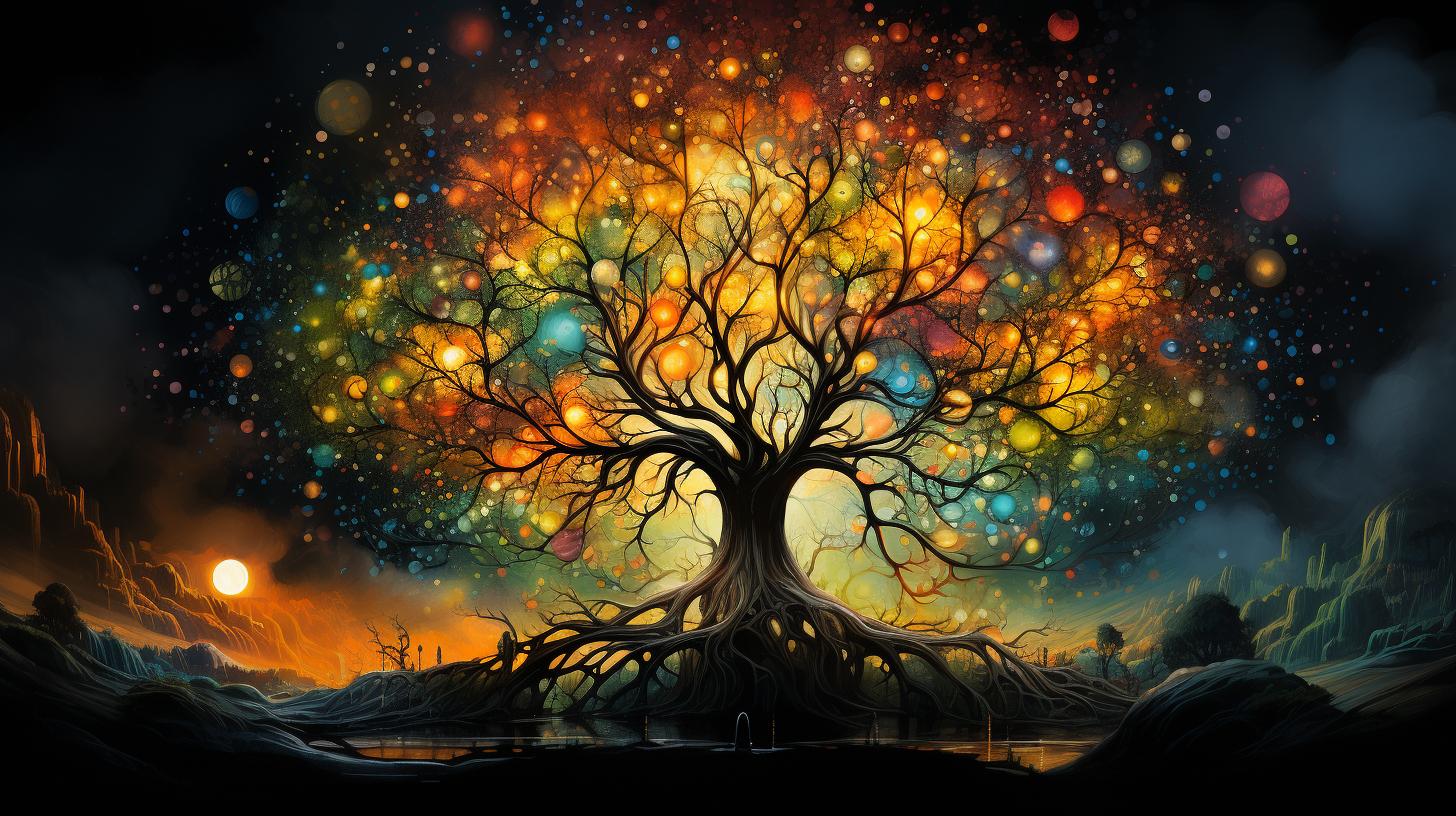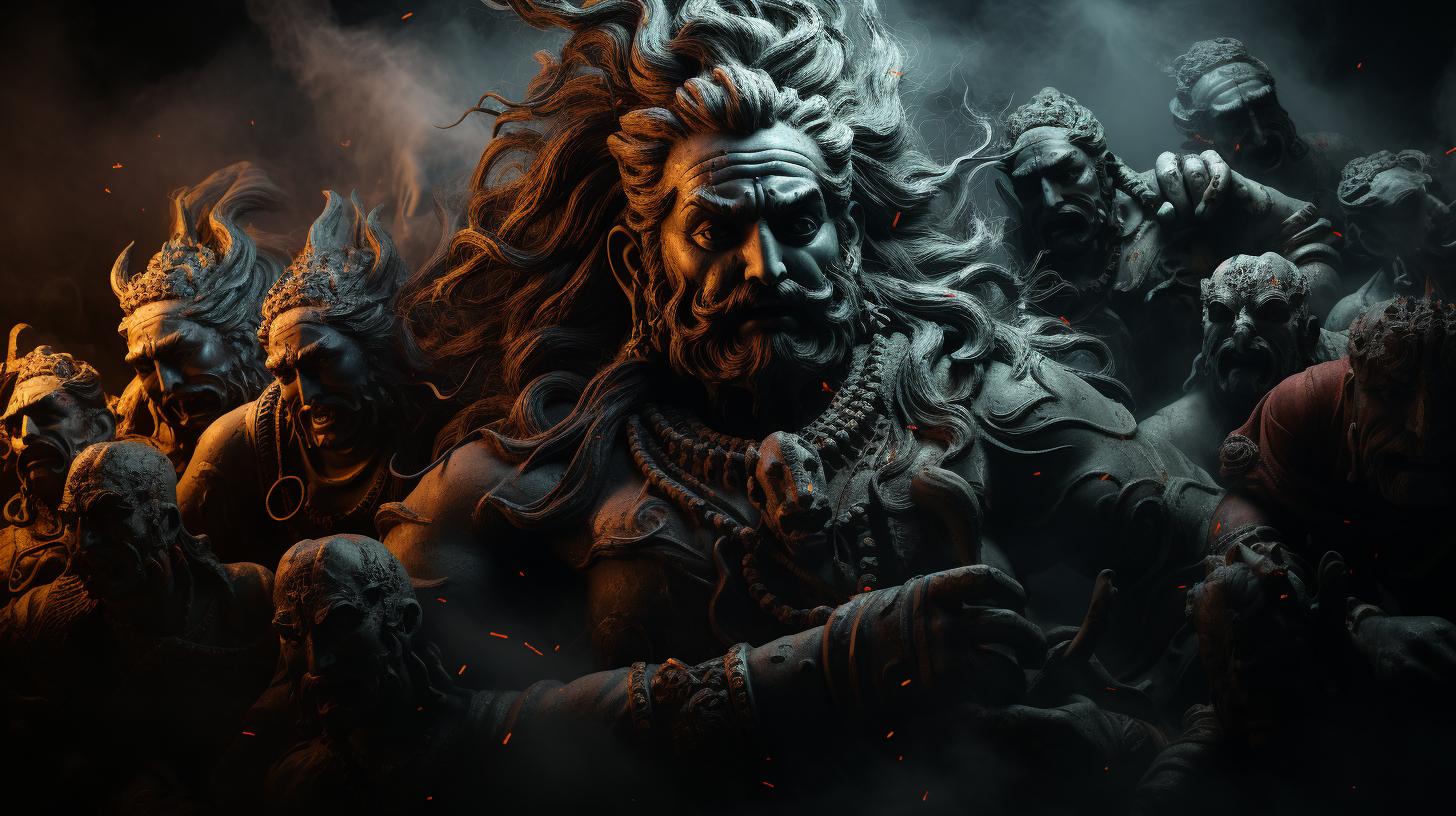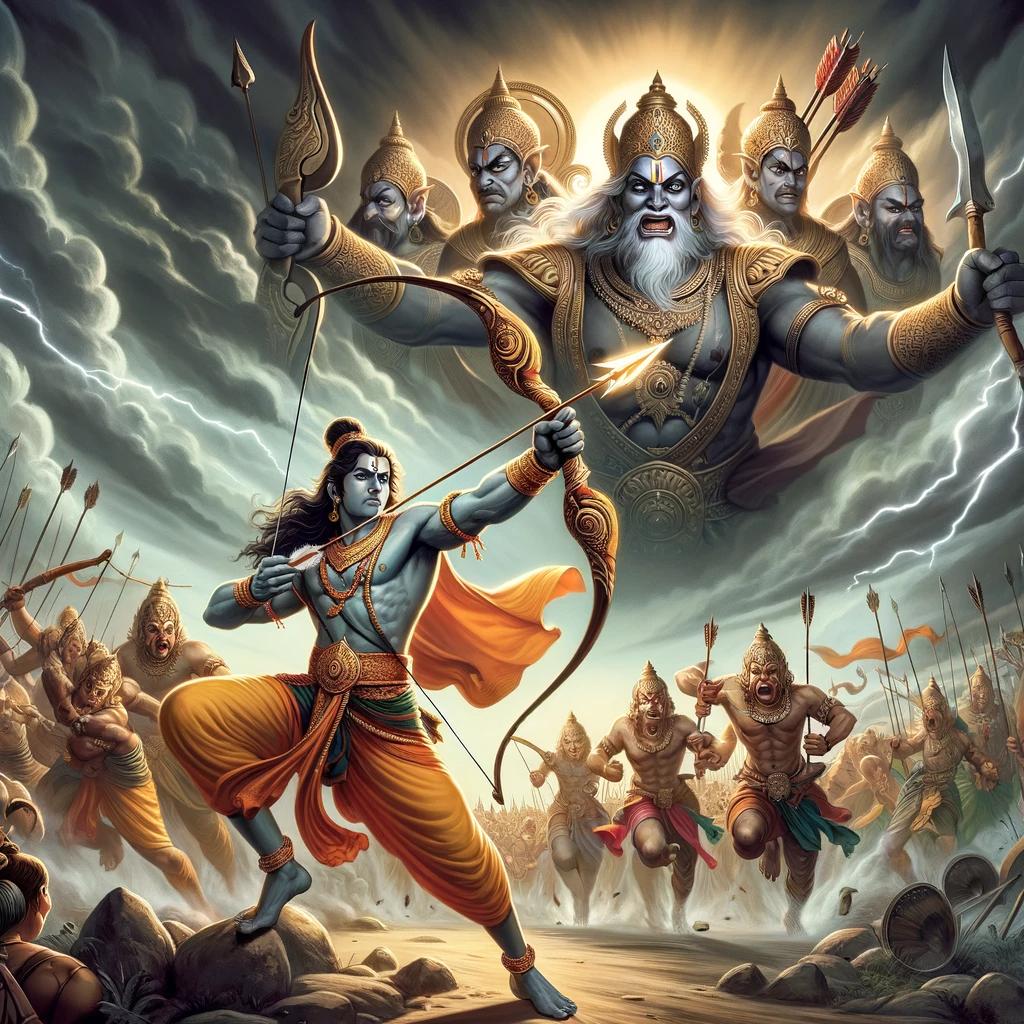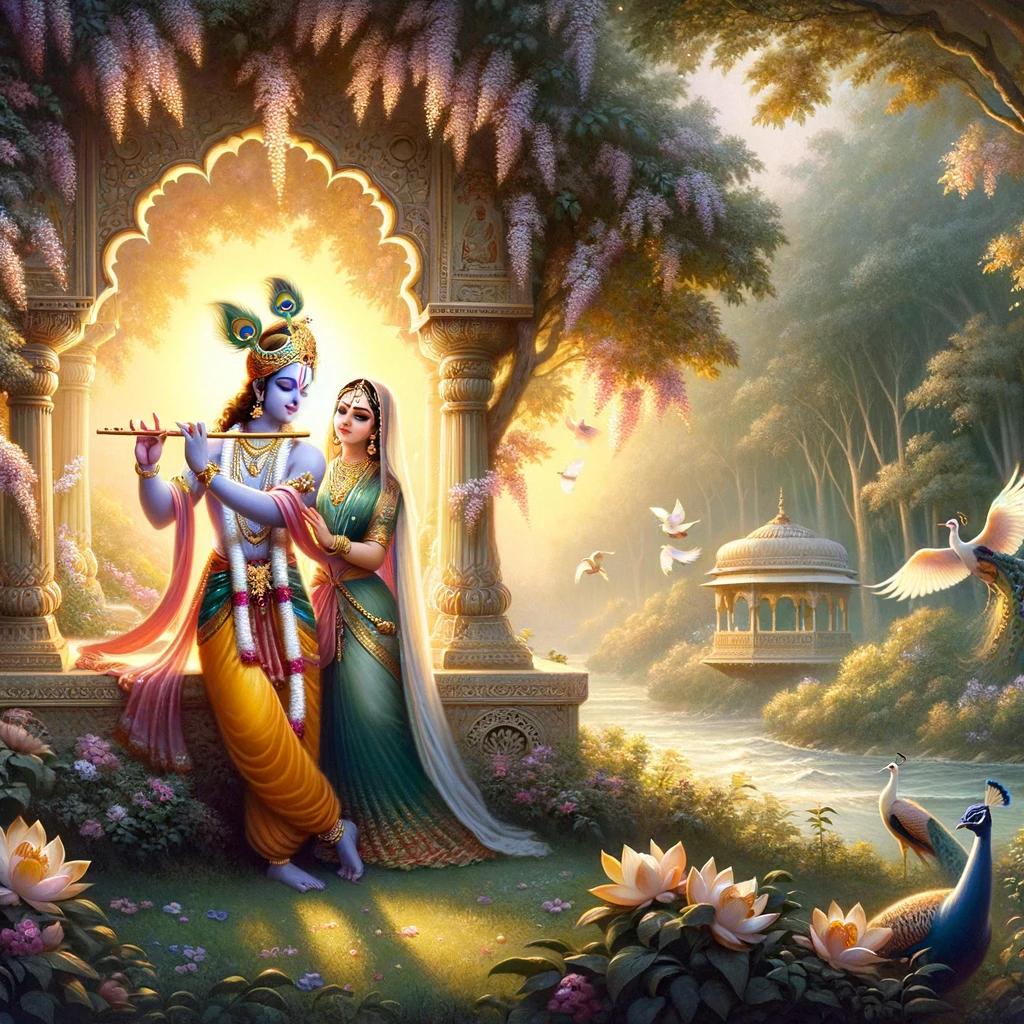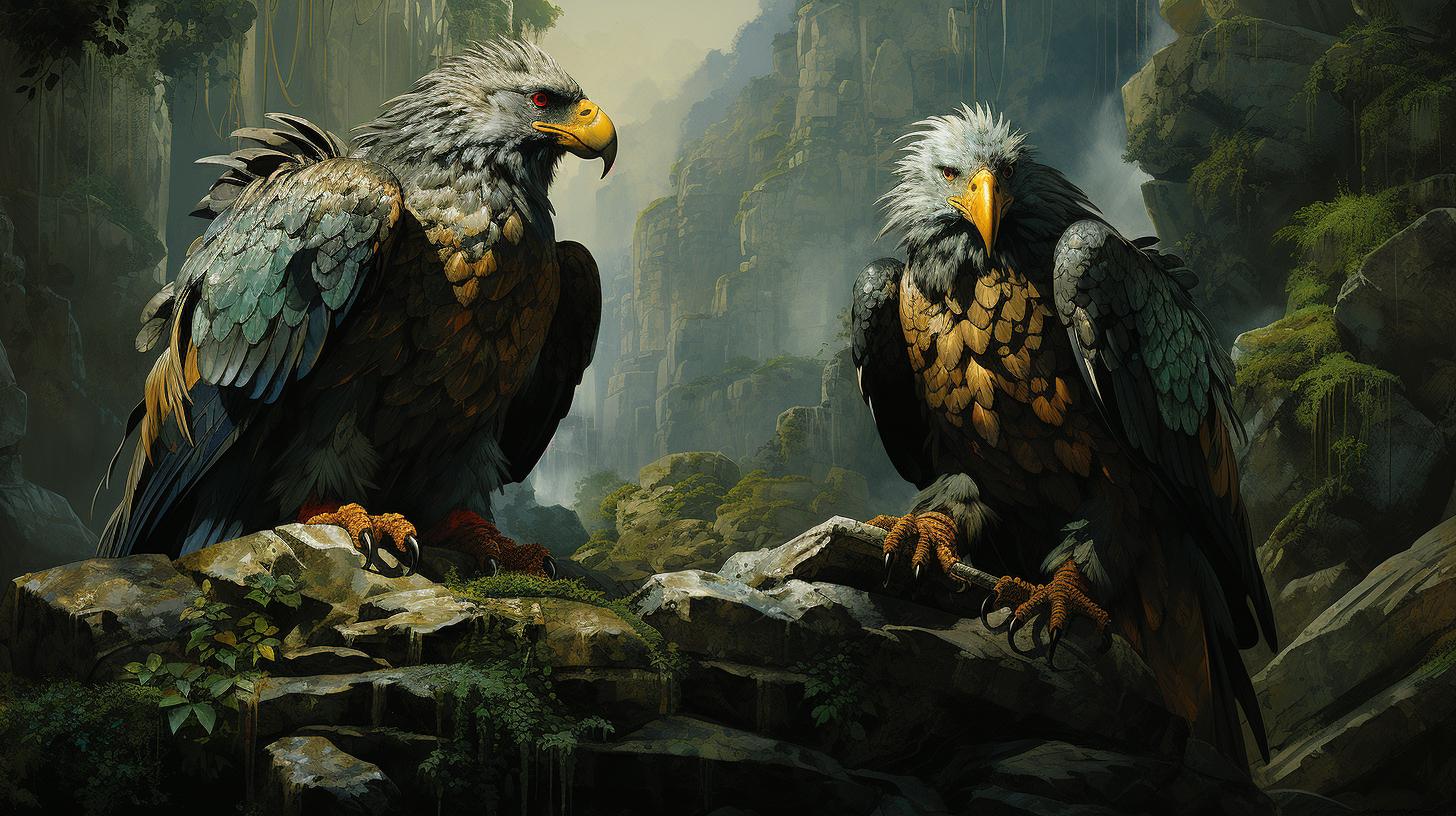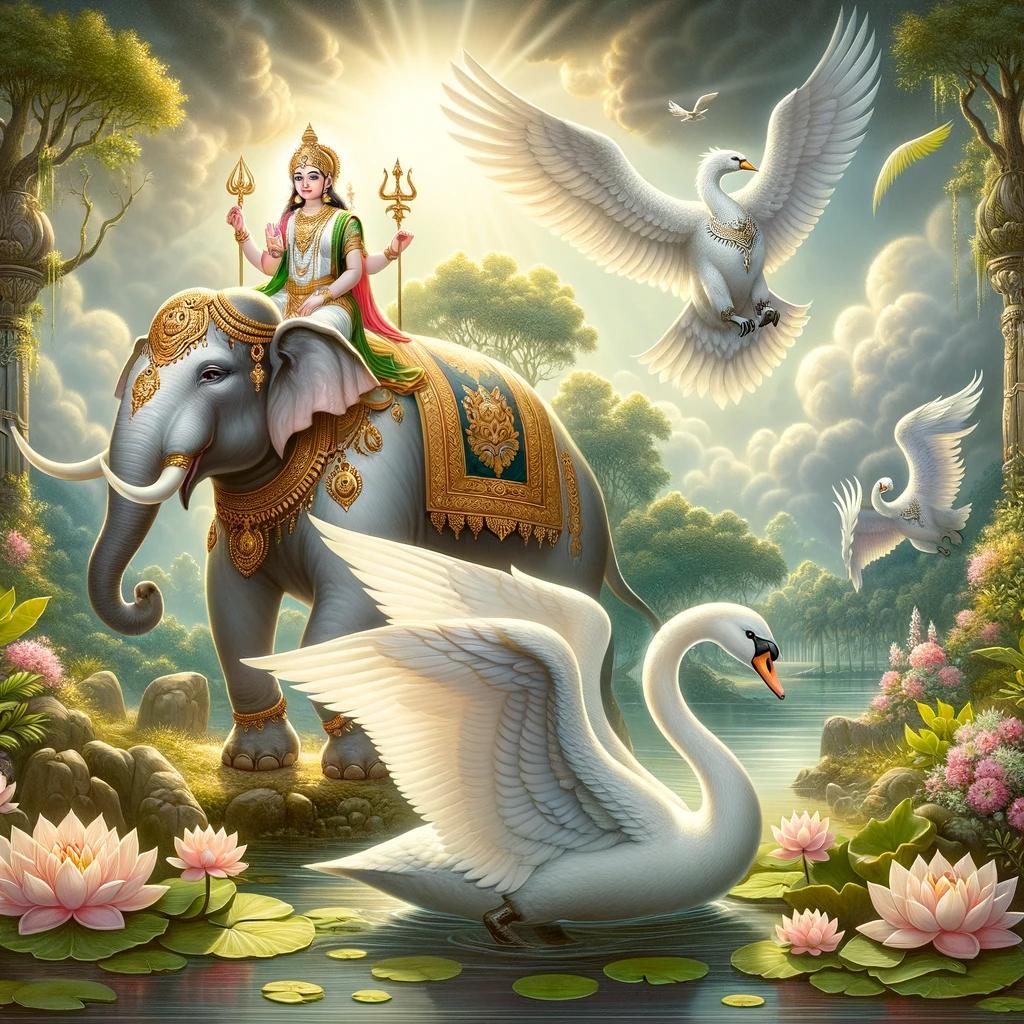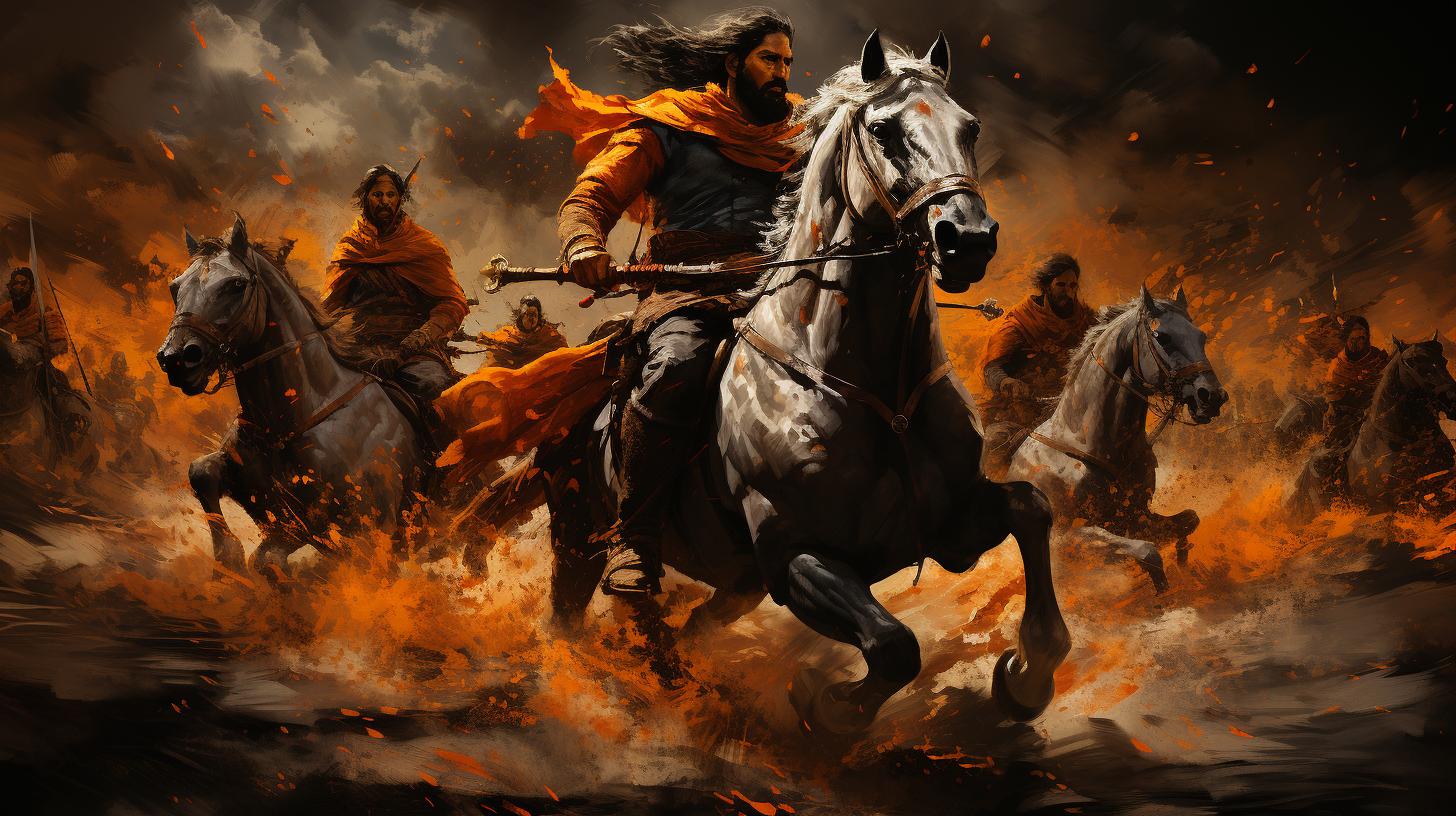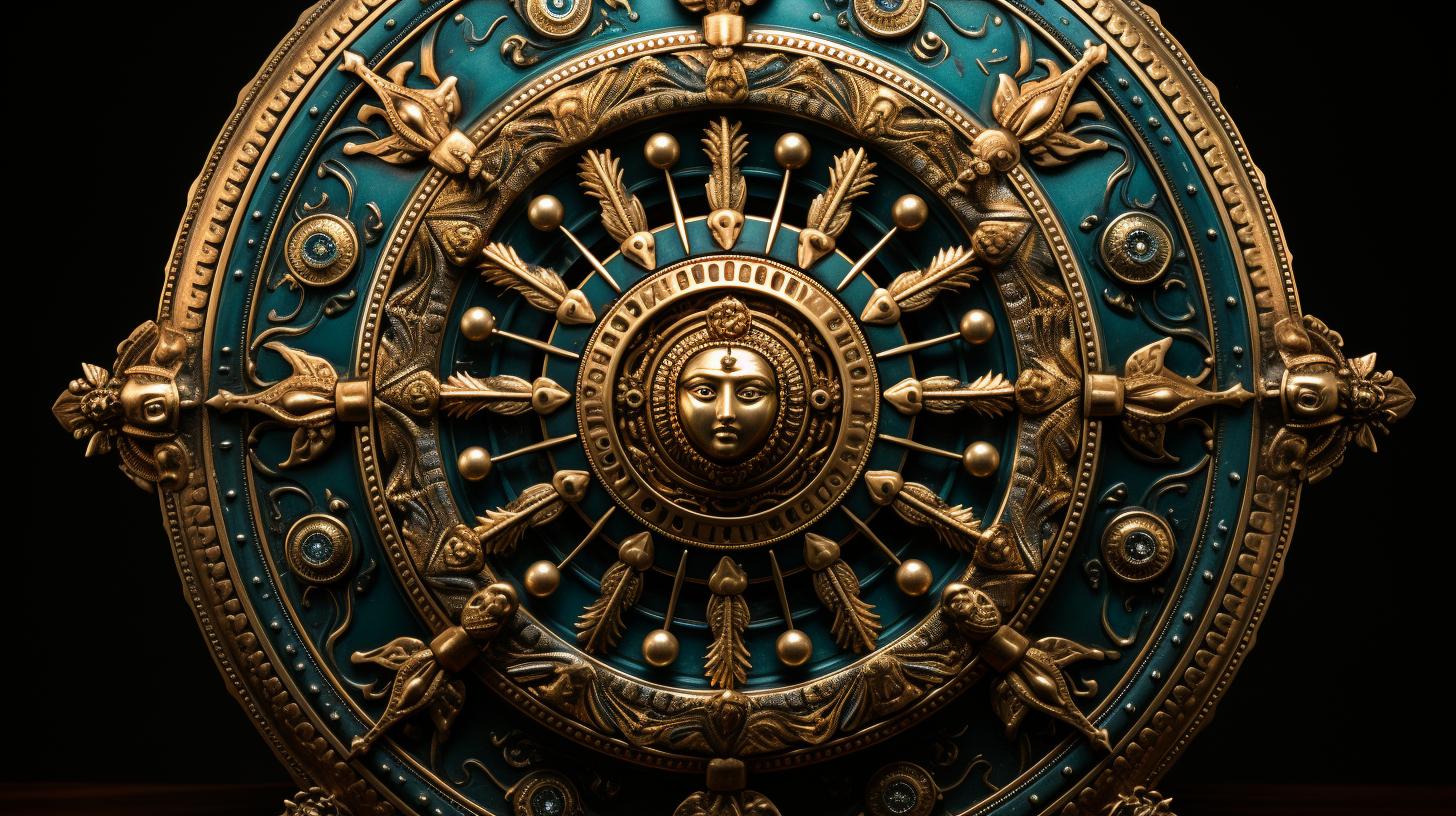Unveiling the Mighty Power of Sharabha Avatar in Hindu Mythology
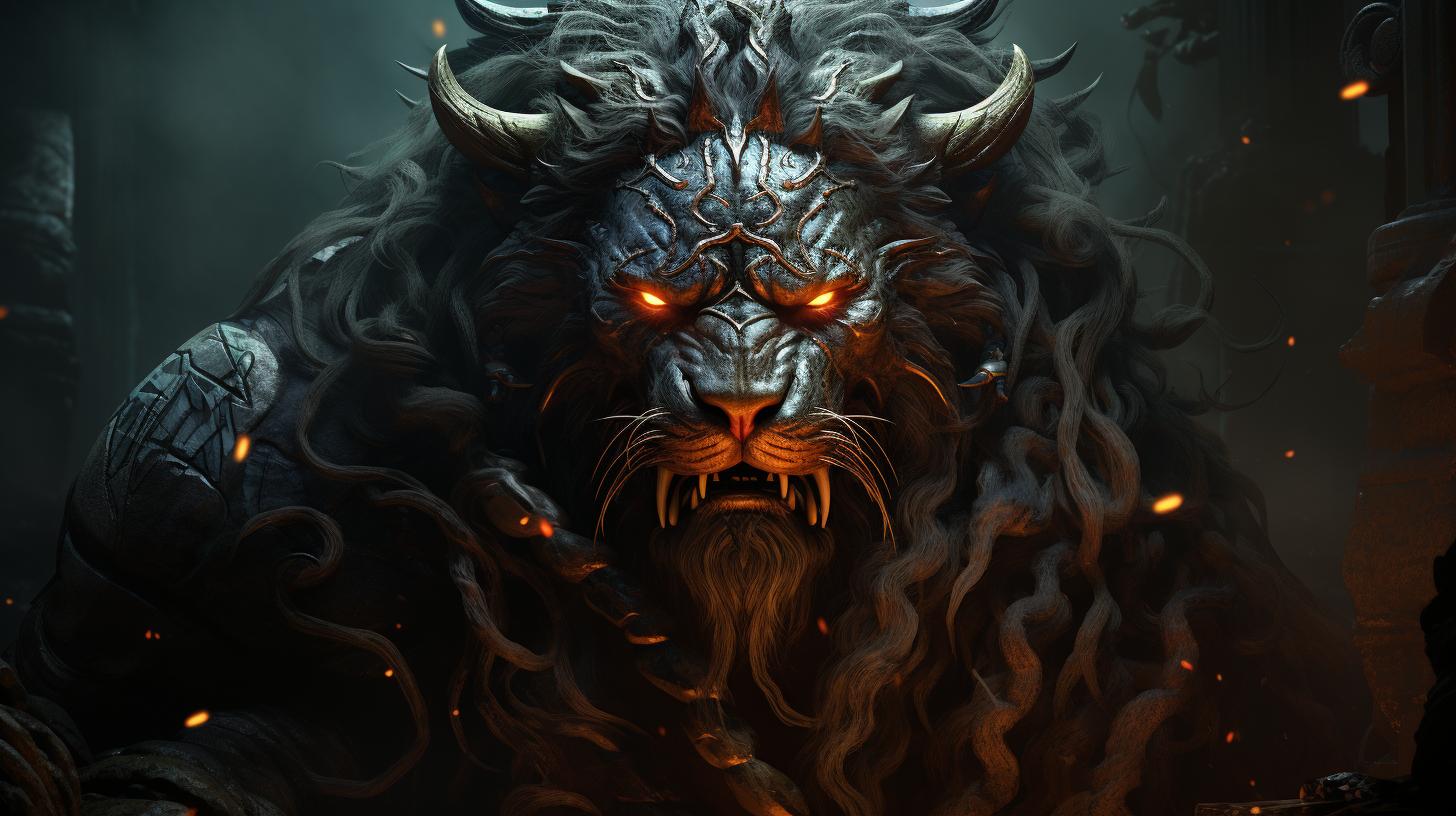
The Sharabha avatar holds a prominent place in Hindu mythology, displaying a fearsome combination of lion, bird, and human characteristics. It emerges as Shiva’s response to control the ferocity of Narasimha, another powerful avatar of Vishnu. This avatar has a significant role in restoring balance and harmony in the universe.
With roots in ancient scriptures and depicted in various artistic forms, Sharabha avatar remains a compelling figure in the religious traditions of South Asia.
Understanding the Sharabha Avatar in Hindu Mythology
The Origin and Description of Sharabha Avatar
The Sharabha avatar is a unique and mystical entity in Hindu mythology.
It is depicted as a formidable creature, combining the characteristics of a lion, bird, and human. This extraordinary form is assumed by the god Shiva, aiming to subdue the fierce Narasimha avatar of Vishnu. The Sharabha avatar possesses incredible powers, with multiple limbs, sharp claws, and a terrifying appearance.
Sharabha’s Relationship with Narasimha God
The dynamic between Sharabha and the Narasimha god is fascinating. Narasimha, a half-man half-lion figure, emerges to protect Prahlad from the demon king Hiranyakashipu. However, Narasimha’s uncontrollable rage threatens to destroy the universe.
In an effort to calm Narasimha, the other gods turn to Shiva, who undertakes the powerful form of Sharabha. Sharabha successfully subdues Narasimha, restoring balance and preventing further destruction.
Expanding on the rich mythological lore, the Sharabha avatar holds great significance in Hindu scriptures and is often revered by devotees. The ancient texts, such as the Puranas and Shiva Purana, shed light on the divine nature and purpose of the Sharabha manifestation.
Additionally, Jataka tales and other ancient scriptures further explore the legends and symbolism associated with this awe-inspiring avatar.
The unique features of the eight-legged beast, such as its unparalleled strength and imposing appearance, are subject to deep analysis.
Exploring the symbolism behind its fierce countenance uncovers layers of meaning and metaphorical representation within Hindu mythology.
The worship and devotional practices surrounding the Sharabha avatar are also of great importance.
Hindu rituals and temples across South Asia pay homage to this divine entity, and devotees engage in Sharabha Upasana as a means to connect with its power and seek blessings.
The complex legends and mythology surrounding Sharabha are further illuminated by revered texts like the Vishnu Sahasranama and the Sharabha Upanishad.
These texts provide insights into the divine nature of the avatar and offer interpretations of its symbolism within the context of Hindu spirituality.
Thus, understanding the Sharabha avatar in Hindu mythology brings forth a profound appreciation for its role in maintaining cosmic balance and its enduring significance as a symbol of divine intervention and power.
The Role of Shiva Avatar in Controlling Narasimha
Within Hindu mythology, Shiva’s avatars play an important role in maintaining balance and harmony in the universe. Particularly, Shiva assumes different forms to control and subdue powerful deities like Narasimha. In the epic battle between Vishnu’s fierce avatar Narasimha and the forces of chaos, Shiva’s intervention is crucial.
Shiva’s Transformation into Virabhadra to Confront Narasimha
In his attempt to control Narasimha, Shiva first takes the form of Virabhadra, a formidable deity with a ferocious appearance. Virabhadra engages in a fierce battle with Narasimha, using his divine powers to try and suppress the overwhelming rage of this untamed avatar.
Shiva’s Ultimate Form as Sharabha to Calm Narasimha
Despite his efforts as Virabhadra, Shiva realizes that Narasimha’s energy cannot be fully contained. To bring peace and prevent the destruction of the universe, Shiva assumes his ultimate form as Sharabha.
Sharabha is a colossal creature with multiple limbs, razor-sharp claws, and a terrifying voice.
- Sharabha’s Gigantic Presence: Sharabha’s towering size represents the immense power needed to subdue Narasimha.
- Multitude of Limbs: The numerous limbs of Sharabha signify the ability to restrain and control Narasimha’s mighty strength.
- Formidable Claws: Sharabha’s sharp claws symbolize his capacity to subjugate and calm the wildness of Narasimha.
- A Terrifying Voice: The fearsome roar of Sharabha serves to pacify and restore Narasimha to his divine form.
By assuming the form of Sharabha, Shiva successfully curbs Narasimha’s destructive tendencies, bringing him back to his composed and balanced state.
Sharabha’s intervention becomes vital in restoring order and harmony to the universe.
Through various versions of this story, Sharabha’s remarkable ability to control Narasimha and restore equilibrium is emphasized. These tales have been passed down through generations, documented in ancient scriptures, and depicted in art and sculptures in temples across South India.
Unveiling the Legends and Stories of Sharabha Avatar
Unveiling the Legends and Stories of Sharabha Avatar takes us into the captivating world of ancient Hindu mythology. This powerful avatar holds great significance in various scriptures and tales, shedding light on its mythological origins and symbolic representations.
The Significance of Sharabha Avatar in Puranas and Shiva Purana
Sharabha avatar holds a significant place in the Puranas, the ancient Hindu texts that contain rich mythological narratives. Within the Shiva Purana, the avatar’s role in taming the fierce Narasimha god is explored, emphasizing Sharabha’s ability to bring harmony and restore balance in the universe.
Sharabha in Ancient Scriptures and Jataka Tales
Apart from the Puranas, references to Sharabha’s valor and power can also be found in ancient scriptures and Jataka tales. These tales further enhance our understanding of Sharabha’s role in Hindu mythology, showcasing its ability to control the uncontrollable and restore order in times of chaos.
The Symbolism and Features of Sharabha Avatar
The Symbolism and Features of Sharabha Avatar
Exploring the Eight-Legged Beast: Sharabha’s Unique Characteristics
The Sharabha avatar is characterized by its fascinating features, including its eight legs. This distinctive attribute represents strength and agility, symbolizing the avatar’s ability to control and navigate different realms. Sharabha’s multiple limbs demonstrate its capacity to restore balance and maintain harmony in the universe.
It showcases the avatar’s dominance and power, enabling it to overcome any obstacles in its path.
Decoding the Fierce Appearance of Sharabha
The appearance of Sharabha is awe-inspiring, evoking both fear and admiration. With a combination of human, bird, and lion features, its visage exudes a sense of authority and formidable strength. The sharp claws and intimidating roar further accentuate its fierce nature.
This depiction conveys Sharabha’s role as a powerful force, capable of subduing the intense energy of Narasimha and restoring divine order. Its terrifying appearance serves as a reminder of the untamed powers that need taming to ensure cosmic equilibrium.
Sharabha Avatar in Worship and Devotional Practices
Sharabha holds a significant place in Hindu rituals and temples, where devotees express their reverence and devotion towards this powerful avatar. Worship of Sharabha involves various practices and ceremonies that uphold the mystical aura surrounding this deity.
Here, we explore the role of Sharabha in Hindu rituals and temples:
Sharabha in Hindu Rituals and Temples
Sharabha is worshiped in temples devoted specifically to this avatar, where elaborate rituals and ceremonies take place.
Devotees offer prayers, incense, flowers, and perform aarti (a ritual of waving a lamp) to show their devotion. The temples are adorned with intricate sculptures and images depicting the powerful form of Sharabha, creating a divine ambiance for worship.
The Importance of Sharabha Upasana in Devotees’ Lives
Sharabha upasana, or the practice of devotion to Sharabha, is highly regarded by devotees. It is believed that by connecting with Sharabha’s energy, devotees can find solace, protection, and divine guidance in their lives.
The upasana involves meditating on Sharabha’s form and chanting mantras to invoke the deity’s blessings. Devotees also seek Sharabha’s intervention in times of difficulty, seeking spiritual strength and inner transformation.
Devotional practices centered around the worship of Sharabha avatar deepen the spiritual connection and foster a sense of devotion among the followers of Hinduism.
The resonance with Sharabha’s power and ability to restore balance strengthens the faith of devotees who seek solace and divine intervention in their lives.
Unraveling the Legends and Mythology behind Sharabha
Vishnu Sahasranama and the Assumption of Sharabha
In Hindu mythology, the Vishnu Sahasranama, a sacred text comprising a thousand names of Lord Vishnu, alludes to the assumption of the Sharabha avatar.
While the specific mention of Sharabha is not prominent in the Vishnu Sahasranama, the powerful and awe-inspiring nature of this avatar is believed to be implied through various epithets used to describe Lord Vishnu. Scholars and devotees closely analyze the text to decipher the concealed references to Sharabha and its significance within the narrative.
Sharabha Upanishad and its Interpretation of the Avatar
The Sharabha Upanishad, a lesser-known Upanishad text, delves deeper into the interpretation and symbolism of the Sharabha avatar. This profound scripture elucidates the aspects of Sharabha as an embodiment of Shiva’s divine power and his ability to tame the fierce Narasimha. It explores the mythical and spiritual dimensions of Sharabha, providing insights into its role in restoring equilibrium and transmuting negative energies into positive forces.
Devotees and scholars often turn to the Sharabha Upanishad to gain a deeper understanding of the philosophical and metaphysical implications associated with this unique avatar.
Exploring Sharabha Tirtha and its Significance in Shaivasarvasvakhandanam
Sharabha Tirtha, also known as Sharabha Teertham, is a sacred pilgrimage site with great spiritual significance for devotees of Lord Shiva. Situated in the southern region of India, this holy place is believed to be the abode of Sharabha, the fierce and mighty avatar of Shiva.
Shaivasarvasvakhandanam, a revered scripture in Shaivism, mentions the deep-rooted connection between Sharabha Tirtha and the miraculous Sharabha avatar.
It describes how this divine site holds immense power and cosmic energy attributed to the mythical creature Sharabha.
Visiting Sharabha Tirtha is considered a transformative experience for devotees seeking spiritual enlightenment and divine blessings.
This pilgrimage site is renowned for its tranquil surroundings and serene ambiance, creating an atmosphere conducive to deep introspection and connecting with the divine.
Devotees who embark on a journey to Sharabha Tirtha often engage in various religious rituals and offer prayers to seek the blessings and protection of Sharabha.
It is believed that by doing so, one can attain spiritual purity and gain insights into the profound mysteries of life as guided by the mighty Sharabha avatar.
- Shaivasarvasvakhandanam emphasizes the ritualistic significance of taking a sacred dip in the holy waters of Sharabha Tirtha, believed to cleanse the soul and wash away sins.
- Pilgrims engage in chanting sacred mantras and performing worship ceremonies at the intricately carved shrines dedicated to Sharabha, seeking divine intervention and blessings.
- The sanctity of the site is further enhanced by the presence of ancient sculptures and inscriptions depicting the various forms and ferocity of Sharabha, captivating pilgrims with the awe-inspiring depiction of the avatar.
- People also engage in offering prayers and performing charitable acts to express their devotion and seek the grace of the powerful Sharabha avatar.
Visiting Sharabha Tirtha not only provides a chance to connect with the divine energy of Sharabha but also offers an opportunity for self-reflection, spiritual growth, and the exploration of profound truths.
It is believed that by delving into the spiritual essence of Sharabha Tirtha, devotees can gain insights into the divine play of Sharabha and its significance in the cosmic balance.
Understanding the Artistic Representations of Sharabha Avatar
Exploring the artistic representations of Sharabha Avatar provides a deeper insight into the visual interpretations of this powerful deity in Hindu mythology.
The depictions of Sharabha in art and sculptures showcase the diverse expressions and symbolism associated with this divine being.
Scattered Divinity: Sharabha in Art and Sculptures
Sharabha’s presence is scattered across various art forms and sculptures, particularly in the temples of South India. These intricate art pieces beautifully capture the essence of Sharabha’s hybrid form, with its combination of leonine, avian, and human features.
The sculptures of Sharabha often portray its colossal size and multiple limbs, emphasizing its formidable power. The intricate details, such as the sharp claws, feathers, and intense expressions, bring this mythical creature to life in a visually captivating manner.
Furthermore, the representation of Sharabha in art transcends mere physical depictions. The sculptures reflect the deep spiritual significance of this avatar, invoking awe and reverence among devotees who encounter them.
Iconography and Symbolism of Sharabha in Visual Depictions
The iconography of Sharabha in visual depictions carries profound symbolism, hinting at its divine nature and purpose.
The fusion of lion, bird, and human attributes symbolizes strength, agility, and wisdom, illustrating the overcoming of instincts, emotions, and intellect.
Additionally, the fierce appearance and aterradora voice of Sharabha signify its role as a powerful guardian and protector.
This image of strength and ferocity conveys Sharabha’s ability to subdue and control the wrath of Narasimha, restoring balance and harmony.
Artistic representations of Sharabha also often incorporate subtle details and sacred motifs to further enhance its significance.
The inclusion of divine symbols, such as lotus flowers, tridents, and sacred weapons, reinforces Sharabha’s divine nature and its association with Shiva.
In conclusion, the artistic representations of Sharabha Avatar offer a visual journey into the captivating world of Hindu mythology.
Through intricate sculptures and symbolic iconography, the profound nature of Sharabha’s role and its divine attributes are beautifully depicted, inviting devotees to delve deeper into the spiritual realm.











